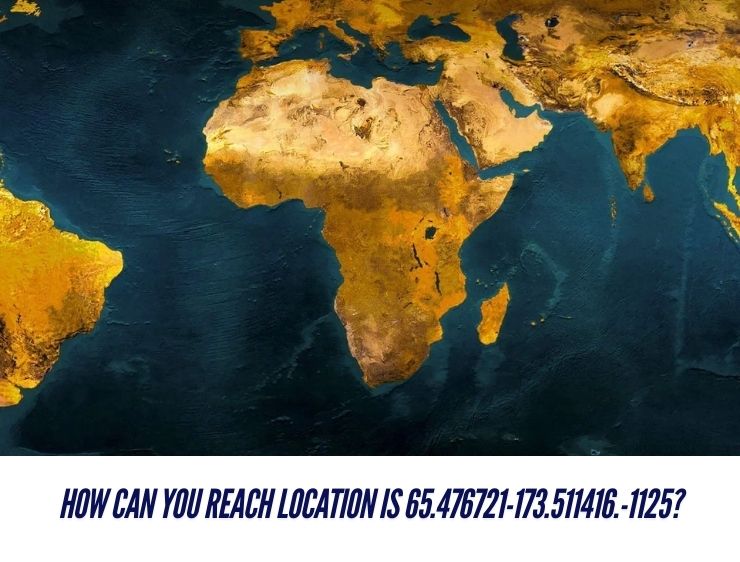How Can You Reach Location Is 65.476721-173.511416.-1125?

Introduction
Reaching a remote and exact geographic location, like location is 65.476721-173.511416.-1125, can feel daunting, especially when the place is far removed from regular tourist trails. This set of coordinates is located in the Arctic regions, somewhere along the vast and harsh landscape of northeastern Russia, particularly in Chukotka. Due to its unique and challenging location, reaching this point involves meticulous planning, adequate supplies, and an understanding of the terrain.
In this guide, we’ll outline the best ways to reach this location, consider your transportation options, go over essential travel preparations, and help you understand the tools and resources you’ll need to find and travel to this very specific and remote destination.
Understanding Location Coordinates and Why They Matter
Coordinates like “65.476721-173.511416.-1125” provide an exact point on Earth’s surface. Each number in this sequence represents:
- Latitude (65.476721): Indicates the north-south position, showing it lies in the Northern Hemisphere.
- Longitude (173.511416): Shows the east-west position, placing it close to the eastern edge of Russia.
- Elevation (-1125): Represents a depth or underground point, possibly implying an underwater or subterranean landmark.
Step-by-Step Guide to Reach Location Is 65.476721-173.511416.-1125
Choosing Your Mode of Transportation
- By Air:
The nearest airports to Chukotka, Russia, include Anadyr Airport (DYR) and Pevek Airport (PWE). Though commercial flights may be infrequent, connecting flights from Moscow or other major Russian cities can get you close to the region. From there, chartered flights or helicopters can provide closer access to specific remote areas. - By Boat:
The Arctic Ocean borders Chukotka to the north. During summer, when ice is reduced, specialized expedition vessels can access areas around Chukotka’s northern coasts. This option is more accessible during warmer months but may still require hiking or snow travel to reach exact land-based coordinates. - By Snowmobile or Sled:
Within the Arctic region, snowmobiles are commonly used for shorter distances and challenging terrains. If you need to travel overland, renting or hiring an experienced local guide with access to a snowmobile may be one of the best options. - By Foot:
Reaching such a precise location may require some walking or hiking, especially if it lies in a restricted or rough area. Always bring survival gear and a GPS device for navigation.
Essential Preparations for Arctic Travel
Traveling to a remote area with coordinates like location is 65.476721-173.511416.-1125 requires thorough preparation due to extreme weather conditions and potential isolation. Here are the main steps to follow:
- Research the Area
Understanding the terrain, weather patterns, and accessibility of Chukotka will help you pack appropriately and prepare for unexpected conditions. - Gear Up with Essential Equipment
Arctic travel demands specific gear:- Warm, layered clothing: Arctic temperatures can plummet, so insulating layers are crucial.
- Survival equipment: This includes a high-quality tent, portable stove, fuel, and food supplies.
- Navigation tools: GPS units, detailed maps, and compass; ensure devices are weather-resistant.
- Emergency supplies: First-aid kits, satellite phone, and distress signals are essential for safety.
- Hire an Experienced Guide
Navigating a place like this often requires local knowledge. Consider hiring a guide familiar with the Chukotka region who can assist with safe navigation. - Obtain Permits
Traveling to remote parts of Russia sometimes requires permits or permissions, especially in Arctic areas. Contact local authorities or travel agencies specializing in Arctic exploration to secure the necessary paperwork.
Tools to Locate Specific Coordinates
To reach location is 65.476721-173.511416.-1125 accurately, you need reliable tools:
- GPS Device
High-accuracy GPS devices, preferably military-grade or designed for harsh environments, are essential. They will help you pinpoint exact coordinates even in remote areas. - Mobile Apps
Some apps, like Google Maps and Gaia GPS, offer offline map downloads, which are helpful when internet connectivity is unavailable. - Printed Maps and Compass
Digital tools can fail, so having a compass and printed topographic maps is a dependable backup for locating exact positions.
Challenges of Reaching Remote Locations in the Arctic
Traveling to coordinates like location is 65.476721-173.511416.-1125 comes with its own set of challenges:
- Weather Conditions
The Arctic experiences extreme weather variations, and storms can arrive suddenly. Checking weather forecasts and traveling during favorable seasons can make the journey safer. - Lack of Infrastructure
Few roads and fewer facilities make the area tough to navigate. Lack of cellular networks and emergency services means travelers must be self-sufficient. - Wildlife Risks
The region is home to animals like polar bears, which pose risks. Proper training and carrying wildlife deterrents, such as bear spray, are advisable. - Physical Endurance
Reaching specific coordinates often involves physical stamina. Be prepared for possible rough terrain, deep snow, or icy conditions.
Alternative Options to Visit Nearby Locations
If you’re unable to reach location is 65.476721-173.511416.-1125 due to extreme weather or logistical constraints, consider exploring nearby accessible spots that offer similar Arctic experiences. Anadyr and Pevek in Chukotka provide insights into Arctic life and indigenous culture and may serve as starting points for less intense excursions.
FAQs
How do I find exact coordinates?
Using a GPS device or mobile app with location services enabled, you can enter coordinates like “65.476721-173.511416.-1125” to get precise directions to any location.
What should I pack for Arctic travel?
Pack cold-weather clothing, a survival kit, navigation tools, emergency supplies, food, and water. Also, bring a satellite phone and distress signal if you’re heading into remote areas.
Can I travel alone to this Arctic location?
Traveling alone to such a remote and challenging area is risky. It’s recommended to go with a guide or an experienced travel group familiar with Arctic conditions.
Do I need a permit to travel to remote Russian locations?
Yes, permits may be required for certain regions in Russia, especially in Arctic or indigenous areas. Always check with local authorities beforehand.
What are the best months to travel to the Arctic?
The best time is typically summer (June to August), when temperatures are milder, and there’s less ice. Winter travel is possible but requires more preparation for severe cold.
What safety precautions should I take in the Arctic?
Prepare for harsh weather, carry a GPS device and emergency supplies, and travel with someone experienced in Arctic survival. Avoid wildlife encounters, and be mindful of sudden weather changes.
Conclusion
Reaching the remote location is 65.476721-173.511416.-1125 is a true adventure requiring careful planning and the right equipment. While the journey is challenging, the opportunity to experience an untouched part of the world and encounter the raw beauty of the Arctic is unmatched. With the right preparations, accurate tools, and an experienced guide, you can make this a journey to remember. So if you’re ready for the challenge, start planning, pack well, and prepare to experience one of the most remote places on Earth. Safe travels!
Visit the news columnist for more informative news.





